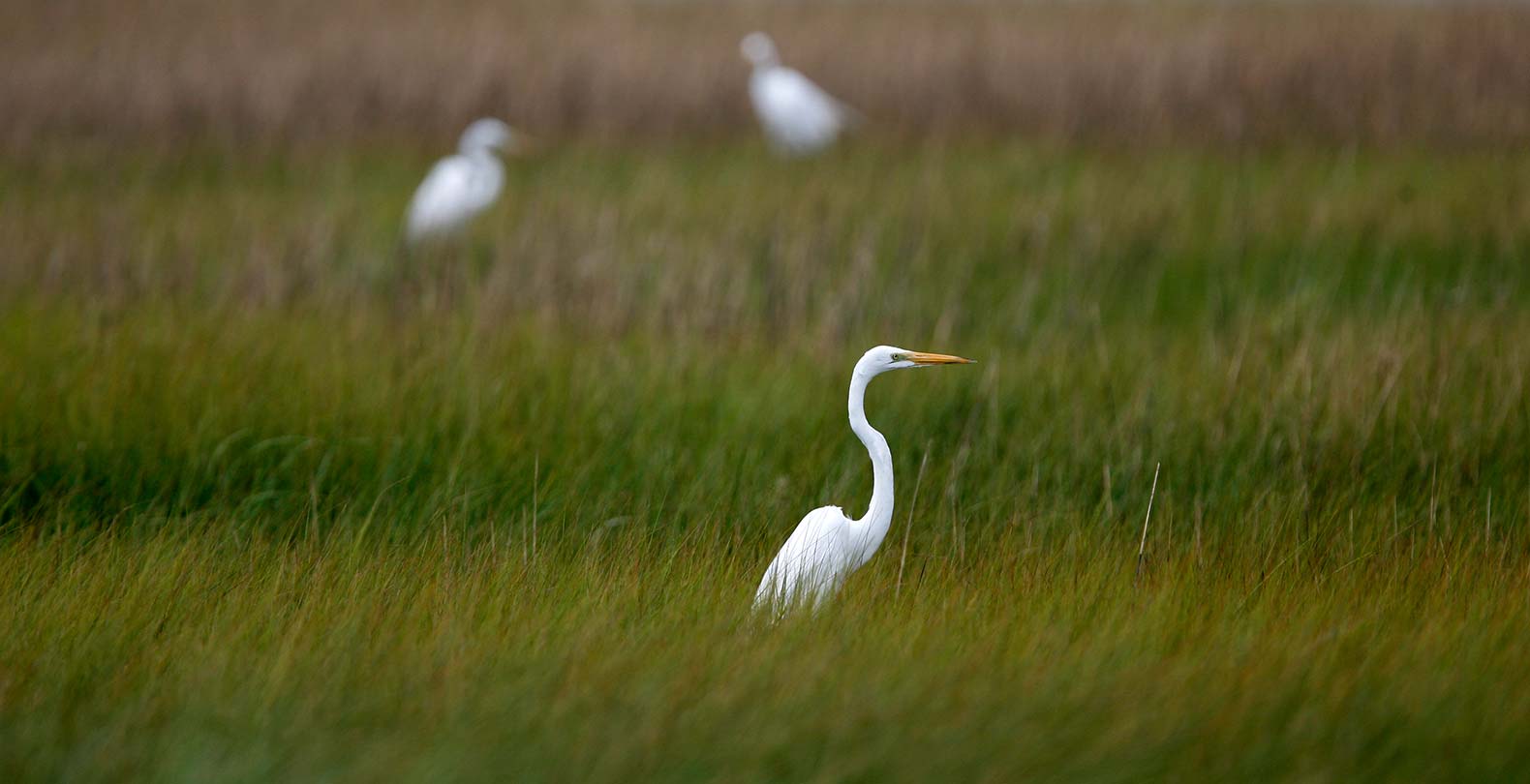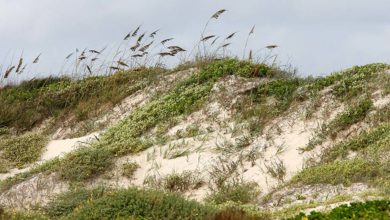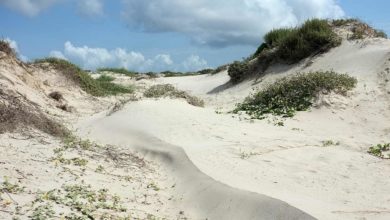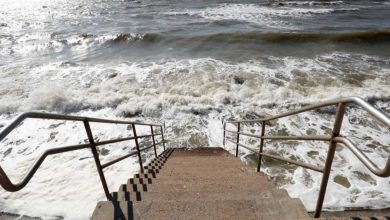What’s so great about sand dunes?
Dunes are just hills of sand at the back of the beach. They’re not a good place to lay out a towel, put up an umbrella or park a car. They block the view of the ocean, and their vegetation scratches at your legs as you make your way to the beach. So what’s the big deal?
Aesthetically, it depends on your point of view. From the beach, dunes block the view of the homes and businesses on the other side, and their elevation and vegetation add variety to the landscape. Consider idyllic beach paintings with tall dunes and waving grasses in the background; now imagine them with nothing but a flat expanse of sand backed by faux Victorian homes and telephone poles.
Aesthetics aside, coastal dunes have practical benefits. They are nature’s sea wall, protecting the property behind them from raging surf, tropical storm surges and washovers. Without a line of substantial dunes, a tropical storm surge will flow unimpeded over the coast, causing millions in property damage or dropping sediment and salt on acres of sensitive coastal prairie and wetlands. Consider the flattened landscape of Bolivar Peninsula in the wake of Hurricane Ike and how the outcome might have changed if it had the looming 20-foot-tall dunes of Padre Island National Seashore. And, with a sufficient flow of new sand along the coast, damaged dunes will rebuild themselves over time.
From a distance, coastal dunes and their desert cousins seem relatively sterile, hot patches of sand. Up close, they come alive. Behind the grassy patches on the windward side of the foredunes lie meadows of vines, shrubs and pastels of flowers. Small crustaceans scurry from burrow to burrow along the sand; butterflies and bees dance from flower to flower. Shore birds nest in the brush and make a meal of the insects and crustaceans. On Padre Island, sea turtles clamber up the beach to lay and bury their eggs at the base of dunes before returning to the sea. As their hatchlings emerge in late summer, they scramble back down to the water to begin their life cycle anew. Dunes are natural pocket parks along the beach.





